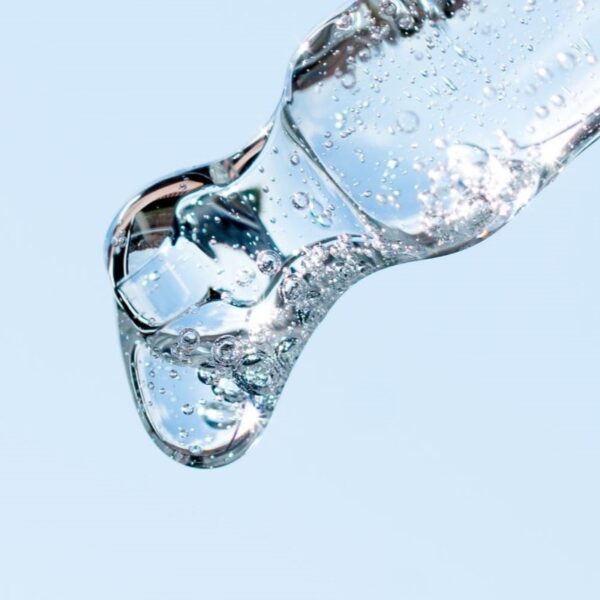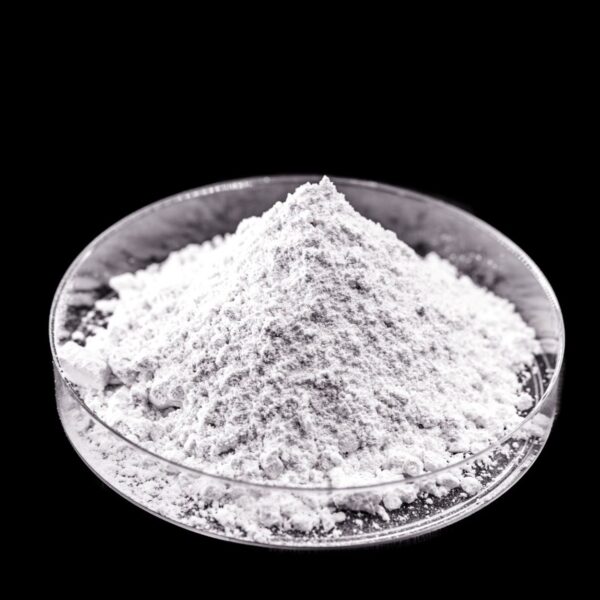Xylitol is a non-fermentable, pleasant-tasting, non-cariogenic sugar alcohol. It has a sweetness similar to that of sucrose and has a cooling effect on the mouth. It is primarily used as a sweetener in the food industry. Pure xylitol is a white crystalline powder that looks and tastes like sugar.
What is Xylitol?
Xylitol is a sugar alcohol commonly used as a sugar substitute. Its chemical formula is C5H12O5, and it is classified as a sugar alcohol. Xylitol is a five-carbon sugar alcohol, meaning it has five carbon atoms in its molecular structure. Unlike most sugar alcohols, xylitol is achiral.
Source: Wikipedia
How is Xylitol Produced?
Xylitol may be produced in a variety of ways. It occurs naturally, and it can be created through fermentation or hydrolysis.
Natural Occurrence: Xylitol occurs naturally in small amounts in certain fruits and vegetables, including plums, strawberries, cauliflower, and pumpkin. Humans and many other animals produce trace amounts during the metabolism of carbohydrates.
The following table lists the xylitol content in various natural sources.
| Product | Xylitol (mg/ 100 g dry solids) |
| Plum (Prunus domestica subspecies italia) | 935 |
| Strawberry (Fragaria var.) | 362 |
| Cauliflower (Brassica oleracea L. var. botrytis) | 300 |
| Raspberry (Rubus idaeus L.) | 268 |
| Endive (Cichorium endives L.) | 256 |
| Bilberry (Hippohae rhamnoides) | 213 |
| Aubergine (Solanum melongena L.) | 180 |
| Lettuce (Lactuca sativa) | 131 |
| White mushroom (Boletus edulis Bull.) | 128 |
| Spinach (Spenacia oleracea L.) | 107 |
| Pumpkin (Cucurbita pepo L.) | 96.5 |
| Onion (Allium cepa L.) | 89 |
| Carrot (Daucus carota L.) | 86.5 |
| Banana (Musa sapientum L.) | 21 |
Source: Springer
Fermentative Production: Xylose-fermenting yeasts that use xylose reductase enzyme to reduce xylose into xylitol. Candida tropicalishas and Candida guilliermondii are the most widely used yeasts for producing xylitol. Fermentative production delivers a better yield and higher purity and is more ecologically viable.
Hydrolytic Production: The production of xylitol through hydrolysis begins with lignocellulosic materials. Multiple detoxifying techniques are used to purify xylitol from the hydrolysates. Microorganisms are utilized to remove certain intermediates. This process is followed by xylitol hydrogenation.
Use of Xylitol in Food & Nutrition
| Function | Role |
| Bulking Agent | Adds volume to food products without significantly adding calories |
| Emulsifier | Helps to stabilize mixtures of two immiscible liquids, such as oil and water |
| Stabilizer | Helps to prevent unwanted changes in the texture or consistency of food products over time |
| Thickener & Texturizer | Helps to thicken the consistency of food products |
| Humectant | Helps retain moisture in food products |
Product Examples
| Type | Examples |
| Bakery | Cake, Pastry, Cookies, Bread |
| Confectionery | Chewing Gums, Soft Chews, Gummy Bears, Crystal Candies |
| Dairy | Yogurt, Ice Cream |
| Beverages | Juices, Soft Drinks |
| Convenience | Jams, Jellies, Cereals, Fruit Preserves |
Properties of Xylitol
| Molecular Weight | 152 |
| Melting Point | 94℃ |
| Heat of Solution | -153 J/g |
| Physical Form | Powder, Crystals (Granules) & Syrup |
| Solubility (25℃) | 200 g/100g Water |
| Viscosity (1% w/v, 25℃) | 2.3 cP |
| Calorific Value | 2.4 Cal/g |
| Relative Sweetness w.r.t Sucrose | 80-100% |
| Glycemic Index | ~13 |
| Shelf Life | 24-36 months |
| GMO Status | GMO/ Non-GMO |
| Claims *Subject to product claims | Kosher, Halal, Dairy-free, Sugar-free, Non-cariogenic,Plant-based*, Organic*, Non-GMO*, Natural*, Allergen-free* |
| Storage Requirements | Cool, dry, dark place < 40℃) |
| Specific Rotation | Optically inactive |
Typical Formulations
Chewing Gum
Here is an example of a chewing gum formulation table with xylitol along with the % weight of ingredients:
| Ingredient | Composition (%) |
| Paloja gum base | 15.0 |
| Magna gum base | 15.0 |
| Xylitol | 68.5 |
| Glycerin | 4.0 |
| Peppermint flavor | 1.5 |
This formulation was used in preparation of an environmentally-friendly chewing gum which does not absorb a significant amount of water, preventing it from softening or drying out.
Source: Google Patents
Cherry Jam
Here is an example of a cherry jam formulation table with xylitol, along with the weight of ingredients by parts:
| Ingredient | Composition (Parts) |
| Cherry pulp | 40 |
| Xylitol | 25 |
| Pectin | 0.6 |
| Jelly powder | 0.2 |
| Citric scid | 0.5 |
| Vanilla | 0.5 |
| Honey | 7.4 |
| Matrimony wine | 1-2 |
| Water | 25 |
| Radix astragali | 0.5 |
| Radix glycerrhizae | 0.3 |
Source: Google Patents
Ice Cream
Here is an example of an ice cream formulation table with xylitol along with % weight of ingredients:
| Ingredient | Composition (%) |
| Fructose | 6.0 |
| Xylitol | 6.0 |
| Corn starch solids | 10.0 |
| Cream | 24.3 |
| MFDM | 0.7 |
| Starch | 2.0 |
| Caseinate | 2.0 |
| Water | 48.7 |
| Stabilizer | 0.3 |
Source: Wiley
Xylitol Formulation Considerations
Stability
Because xylitol contains no reducing groups, it will not take part in Maillard reactions. Due to the absence of aldehyde or ketone group, it does not undergo non-enzymatic browning. Degradation of xylitol will only occur if it is heated to temperatures near the boiling point (216°C) for several minutes. The stability of xylitol is not affected by pH, so it can be used across a broad pH range (1–11). It is oxidation stable.
Sensory Profile
| Physical Form | Crystalline, powder, liquid (syrup) |
| Color | Colorless |
| Taste | Sweet |
| Odor | Odorless |
Sweetness Profile
| Taste Profile | Sweetness very closely resembles sugar |
| Aftertaste | Menthol aftertaste |
| Off Taste | No bitter/metallic off taste is associated with xylitol |
| Taste Threshold | 0.066 mol/L |
Due to the high endothermic heat of solution (34.8 Cal/g), xylitol is used to provide a pleasant cooling effect in various food products, such as biscuit creams, fillings, fondants, and chewing gums. This cooling effect is also characteristic of erythritol and sorbitol.
Use as a Sugar Substitute
With an intrinsic sweet taste, xylitol offers the following benefits as a sugar substitute in many food products.
- Xylitol’s sweetness is similar to sucrose and can be used alone as a substitute for sugar. Other sugar alcohols, such as sorbitol and erythritol, have comparatively lower sweetening power and must be combined with other sweeteners to obtain the desired sweetness.
- Blood glucose and insulin response to xylitol are very low compared to sucrose.
- Xylitol has a lower caloric load compared to sucrose (2.4 Cal/g).
- Because xylitol is a non-fermentable sugar, it does not contribute to dental issues.
The following table compares the properties of xylitol with other sugar alcohols.
| Sugar Alcohol | Calorific value (kcal/g) | Relative Sweetness (to Sucrose) | Glycemic index |
| Maltitol | 2.1 Cal/g | 80-90% | ~35 |
| Erythritol | 0.2 Cal/g | 60-70% | ~0 |
| Xylitol | 2.4 Cal/g | 80-100% | ~13 |
| Sorbitol | 2.6 Cal/g | 50-60% | ~9 |
| Sucrose | 4.0 Cal/g | 100% | ~65 |
Limitations of Usage as a Sugar Substitute
- The solubility of xylitol is comparable to sucrose at ambient temperatures and greater at higher temperatures. However, because xylitol is a monosaccharide sugar alcohol, it shows lower viscosity than sucrose in a solution of similar concentration.
- Xylitol will not exhibit browning when heated and will not trigger the Maillard reaction. For this reason, its use in products in which browning is desired is limited.
- Xylitol tends to crystallize when refrigerated in viscous solutions. This property may be desirable in some food products but undesirable in others.
- Xylitol is more hygroscopic than sucrose but less hygroscopic than sorbitol.
- Xylitol has a lower viscosity in solution than sucrose at any given temperature.
Synergistic Activity
- Xylitol has an edge over other sugar alcohols with higher relative sweetness. However, xylitol is calorie-dense compared to erythritol and maltitol.
- It can be combined with other high-intensity sweeteners, such as acesulfame K and saccharin, to counter the calories for enhanced sweetness.
- Adding xylitol to high-intensity sweeteners helps to provide a cleaner, better-rounded, and altogether more “sugar-like” taste.
- The sweetness of xylitol can help compensate for the sweetness lost in formulations that include aspartame when combined with aldehyde-based flavor systems. (Aldehyde groups have been shown to interact with aspartame, resulting in a diminished perception of sweetness).
- Xylitol enhances and complements the delivery of mint flavors, giving added impact and a refreshing cooling sensation immediately upon consumption.
Metabolism, Absorption, and Excretion
| Biosynthesis | – Xylitol is slowly absorbed from the digestive tract due to the lack of a specific transport system across the intestinal mucosa. Depending upon various factors, Xylitol absorption from the small intestine may vary from 25%-50%. – The unabsorbed portion from the small intestine (approximately 50-75%) passes to the distal parts of the gut, where it becomes a substrate for fermentation by the intestinal flora (i.e., it exhibits a prebiotic effect). It is then converted into short-chain fatty acids. |
| Absorption | – Xylitol is slowly absorbed from the digestive tract due to the lack of a specific transport system across the intestinal mucosa. Xylitol absorption from the small intestine may vary from 25%-50%, depending upon various factors. – The unabsorbed portion from the small intestine (approximately 50-75%) passes to the distal parts of the gut, where it becomes a substrate for fermentation by the intestinal flora (i.e., it exhibits a prebiotic effect). It is then converted into short-chain fatty acids. |
| Metabolism | – Upon entering the hepatic metabolic system, xylitol is sequestered in the liver, where it is further metabolized via the glucuronic acid-pentose phosphate shunt of the pentose phosphate pathway. – The pentose phosphate pathway facilitates the transformation of xylitol into intermediates of the glycolytic pathway, allowing for further degradation and, ultimately, transformation into glycogen. |
| Excretion | An excretion of 1-3% in urine has been recorded after oral administration and 10% after intravenous infusion of xylitol. In feces, 1% of xylitol was excreted. |
Effects on Properties of Food Products
As a food additive, xylitol has specific effects on the products to which it is added.
Functional
| Glass Transition Temperature | The onset temperature and enthalpy for starch melting increases with molar concentration of sugar alcohols. |
| Freezing Point Depression | The addition of xylitol lowers the temperature at which the water freezes. In a study, the freezing point depression factor of xylitol was reported to be 2.2x that of sucrose. |
| Shelf-Life Extension | Owing to its low molecular weight, xylitol exerts a higher osmotic pressure and, therefore, provides a lower water activity than equivalent sucrose solutions. It effectively exerts a greater preservative effect in solution than sucrose. |
Physical
| Viscosity | Xylitol positively affects the viscosity of a solution. The increment is based on the concentration of xylitol. Xylitol increases the viscosity of gels by ionic interactions, hydrogen bonding, van der Waals forces, and hydrophobic association with thickeners like gelatin. |
| Emulsification | Monolauroyl and monomyristoyl esters of xylitol have been found to stabilize oil-in-water emulsions. |
| Water Holding Capacity | Xylitol has a high moisture-holding capacity. It works as an excellent wetting agent and helps retain moisture in the food system. When xylitol is added to a chewing gum formulation in low or high humidity conditions, the chewing gum’s water content remains at a favorable level, and the gum’s flexibility, elasticity, and softness do not encounter major changes. |
Nutritional
| Glycemic Index | The glycemic index of xylitol is ~13. Thus, the effect on blood glucose levels is minimal. |
| Calories | Xylitol provides 2.4 calories when consumed. |
Safety and Regulatory Considerations
| FDA Information | The FDA permits the use of sugar alcohols as sugar substitutes.The FDA permits the use of xylitol in foods for special dietary uses, provided the amount used is not greater than that required to produce its intended effect. |
| EU Information | In the EU, xylitol is permitted to be used as a food additive with the number E 967. |
Health Effects of Xylitol
| Obesity Management | – Xylitol can contribute to weight management by replacing sucrose. Because xylitol has a similar sweetness to sucrose, replacing sucrose with xylitol will reduce the caloric value of a particular food while maintaining taste. – In a study conducted on mice, body weight loss was found to be significantly high with xylitol. Another study on the human population reported an inverse relation between xylitol consumption and weight loss; a high xylitol intake resulted in a small weight loss. |
| Diabetes Management | Xylitol does not lead to an increase in blood glucose or insulin levels. Xylitol can be incorporated into the diet of the diabetic population to obtain the desired sweetness.Xylitol has been observed to improve serum insulin concentration and glucose tolerance in a study conducted on rats. |
| Prebiotic Effect | Xylitol is readily fermented by the intestinal microbiota. Colonic digesta showed an increased formation of butyric acid with the consumption of xylitol. Production of butyric acid is considered beneficial for colonic health as it is the preferred energy source for colonocytes and is thought to be associated with a reduced risk for colorectal cancer. |
Safety & Toxicity of Xylitol
Xylitol is safe for use in foods, although, like most sugar alcohols, it may have a mild laxative effect when eaten in large amounts. It is likely safe when consumed in amounts up to about 50 grams daily.
Identification Numbers
| IUPAC Name | (2S,4R)-pentane-1,2,3,4,5-pentol |
| CAS Number | 87-99-0 |
| EC Number | 201-788-0 |
| INS No. (Food Additive) | INS 963 |
| E Number (Food Additive) | E 963 |
Fun Facts About Xylitol
- Xylitol has been investigated as a potential treatment for ear infections (otitis media) in children. Some studies suggest that xylitol gum or syrup may help prevent recurrent ear infections by inhibiting the growth of certain bacteria.
- While xylitol is safe for humans, it is highly toxic to dogs. Ingesting even small amounts of xylitol can rapidly release insulin in dogs, causing a dangerous drop in blood sugar levels and potentially leading to seizures, liver failure, and death.











